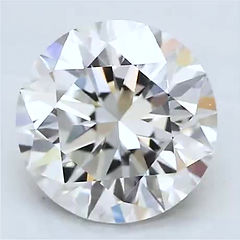What Is Diamond Clarity?
As diamonds are naturally formed within the earth’s surface and subject to intense heat and pressure, they form small, internal and external imperfections. These are known as blemishes (external) and inclusions (internal).
Almost all diamonds have inclusions but they range from extremely visible and heavy to entirely imperceptible to the naked eye. In order to better determine the quality of a diamond, the GIA created a scale of 11 grades.
The clarity is graded under a 10x magnification. The preliminary grader will note all visible inclusions and blemishes and plot their findings on a diamond inclusion plot. The diamond is then tested by several more graders who give their own findings and also note any clarity characteristics. The data from each independent grader is then collected and compared and a final grade is given.
It is a long and stringent process and this is just one of the many reasons that the IGI is one of the most widely respected gem laboratories in the world. Their grading are accurate and consistent and provide essential information for a diamond buyer.
How Are Clarity Grades Determined
Evaluating the clarity of a diamond requires evaluating the quantity, size, relief, type, and location of microscopic features, as well as their effect on the overall appearance of the stone. Experienced gemologists use 10x magnification to identify and classify these clarity characteristics by size, type and condition.
The characteristics are then mapped onto a "diamond plot" that looks different for each diamond! Gemological laboratories such as GIA and IGI measure diamonds on a scale from "inclusion" to "flawless".
Diamond Clarity Chart
Of all the 4 C’s “Clarity” is one of the most easiest characteristic of a diamond. When the diamonds are formed deep inside the earth, due to the pressure certain natural marks are spotted on it known as inclusions and blemishes. The clarity of a diamond is based on its inclusions and blemishes.
Inclusions- The inclusions of a diamond are the inner flaws. Inclusions of a diamond includes un-crystalized carbon, tiny cracks, bubbles and spots which affects the brilliance and quality of the diamond.
Blemishes -The blemishes are the external flaws. Blemishes of a diamond are exterior irregularities accumulated on the surface of a diamond. Both inclusions and blemishes are not easily visible to the naked eye.

FL & IF
FLAWLESS
If you see anything on diamonds with a flawless clarity rating, it's most likely dust. If that small particle were an inclusion inside the diamond, it would undoubtedly reduce the stone to a VVS2
VVS1 & VVS2
VERY VERY SLIGHT INCLUSION
Very Very Slight Inclusion (VVS1/VVS2) diamonds have only slight inclusions that are difficult for a skilled grader to see under 10x magnification.


VS1 & VS2
VERY SLIGHT INCLUSION
Very Slight Inclusion (VS1/VS2) diamonds have minor inclusions that can be seen with effort under 10x magnification.
SI1 & SI2
SLIGHT INCLUSION
Slight Inclusion (SI1/SI2) diamonds have noticeable inclusions under 10x magnification.

How does clarity affect a diamond?
Clarity affects a diamond and its ability to sparkle. A high number of inclusions can affect a diamond's transparency and brilliance. A diamond with many inclusions will appear dull and lacklustre compared to one with very few or no inclusions.
What is the best clarity for a diamond?
The best diamond clarity for a diamond is Flawless (FL), but this doesn't necessarily mean the most beautiful diamond. It is always important to consider the 4 Cs of diamond quality and how they affect each other. For example, diamond carat can impact how noticeable inclusions are, as inclusions are likely to be more visible in a larger diamond than a smaller diamond of the same clarity.
Diamond color and clarity
Diamond color and clarity are very different. Diamond clarity refers to the imperfections within a diamond, whereas diamond color refers to the shade or hue of a diamond. Although they are assessed differently, clarity and color can work harmoniously together to achieve the perfect diamond. For example, a small amount of color within a diamond can be a good thing, as it can help mask any inclusions it may have.

Nishal Gems Standard of Clarity
Nishal Gems strict diamond grading standards are executed with expertise, integrity and accuracy. When Nishal Gems believes that a diamond’s clarity is on the borderline between two grades, Nishal Gems will always assign the stone a lower grade—never falsely inflating a diamond clarity grade.

